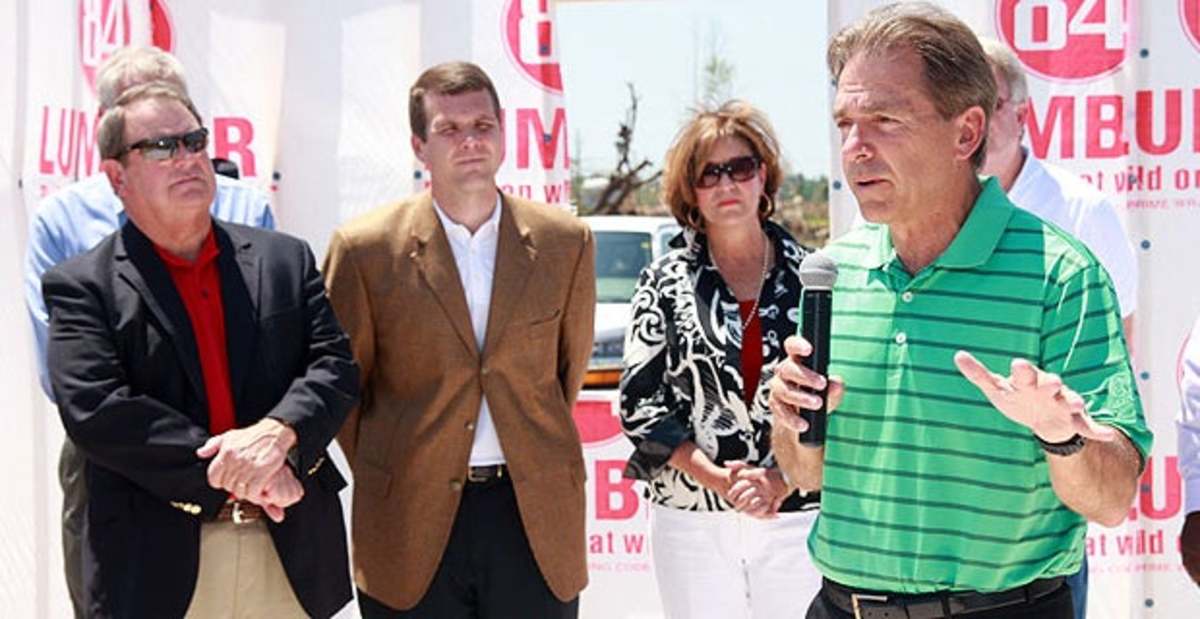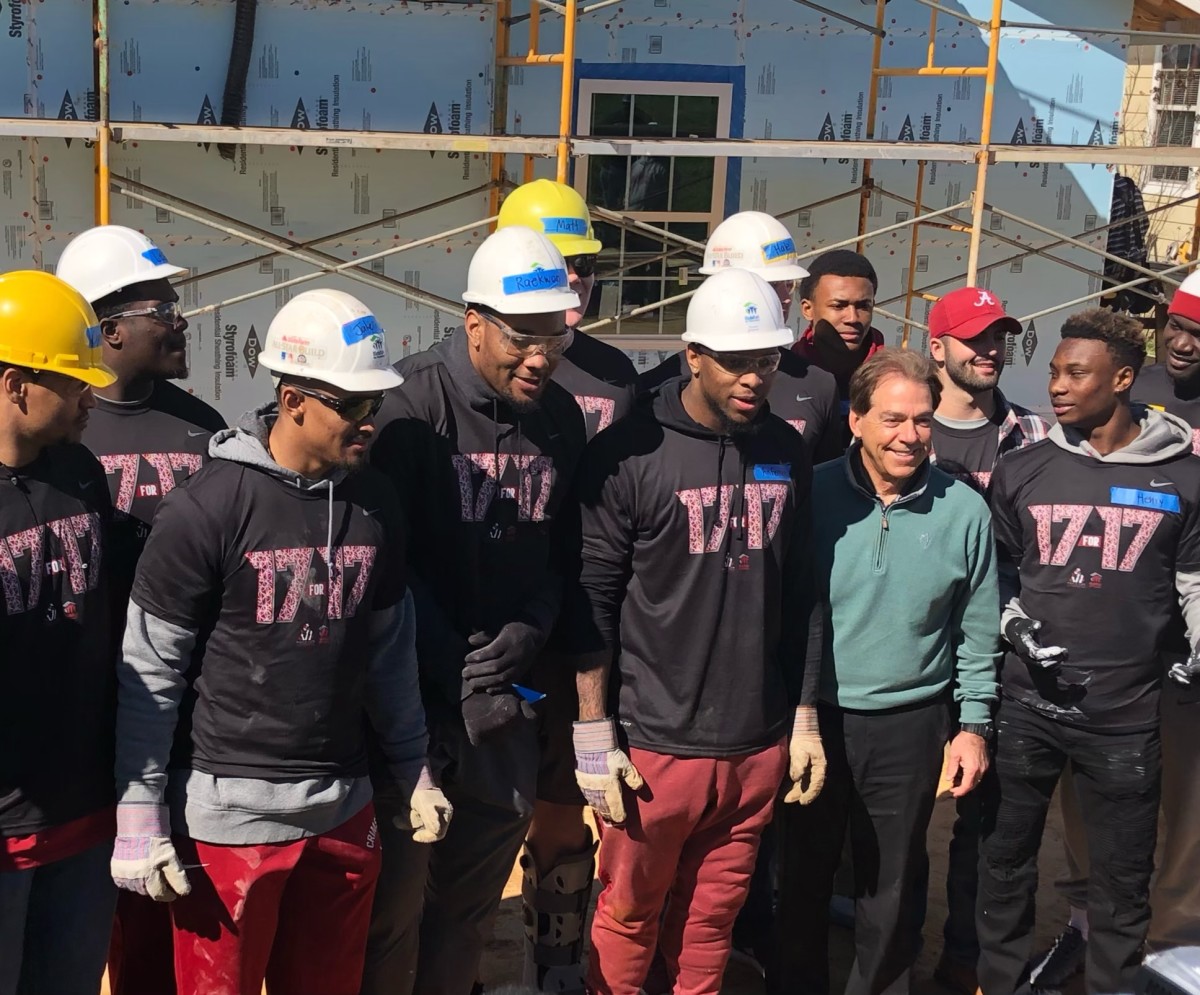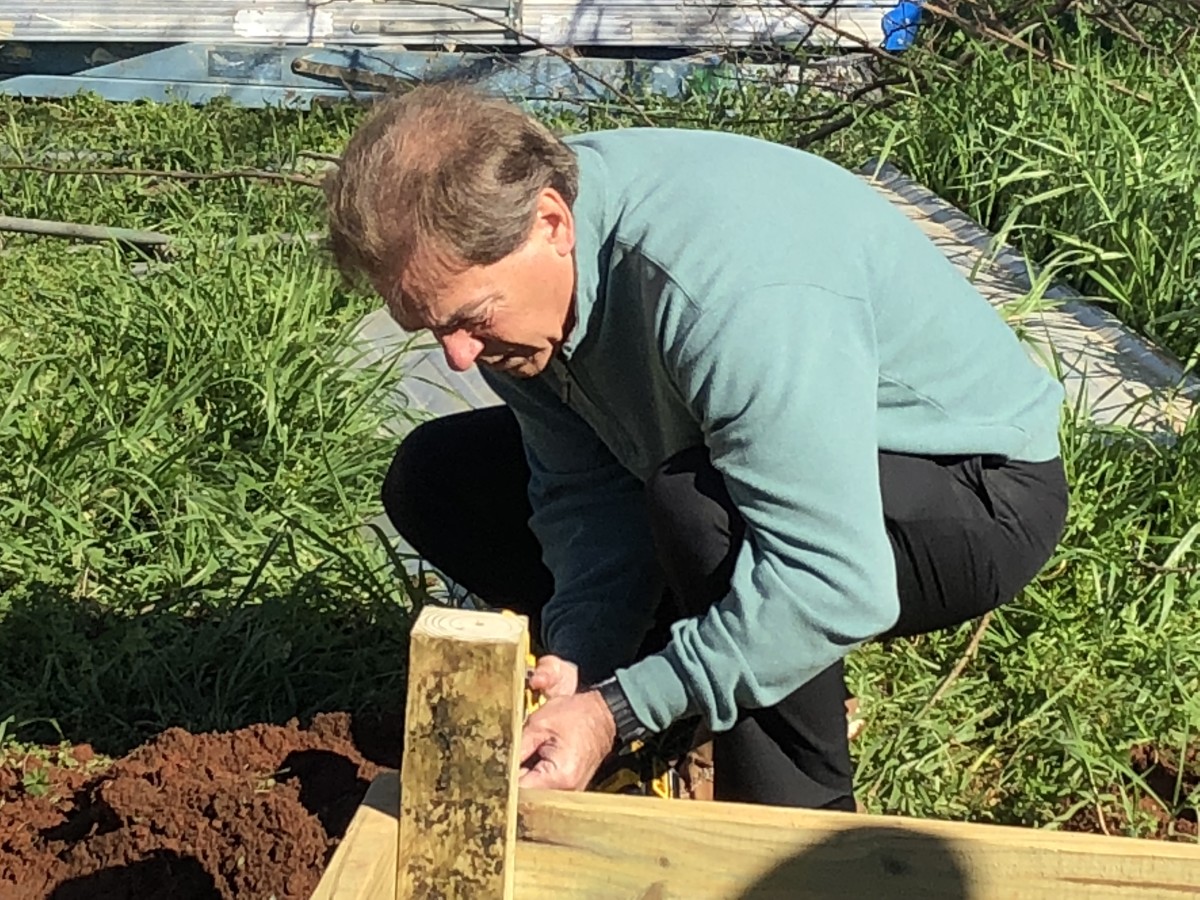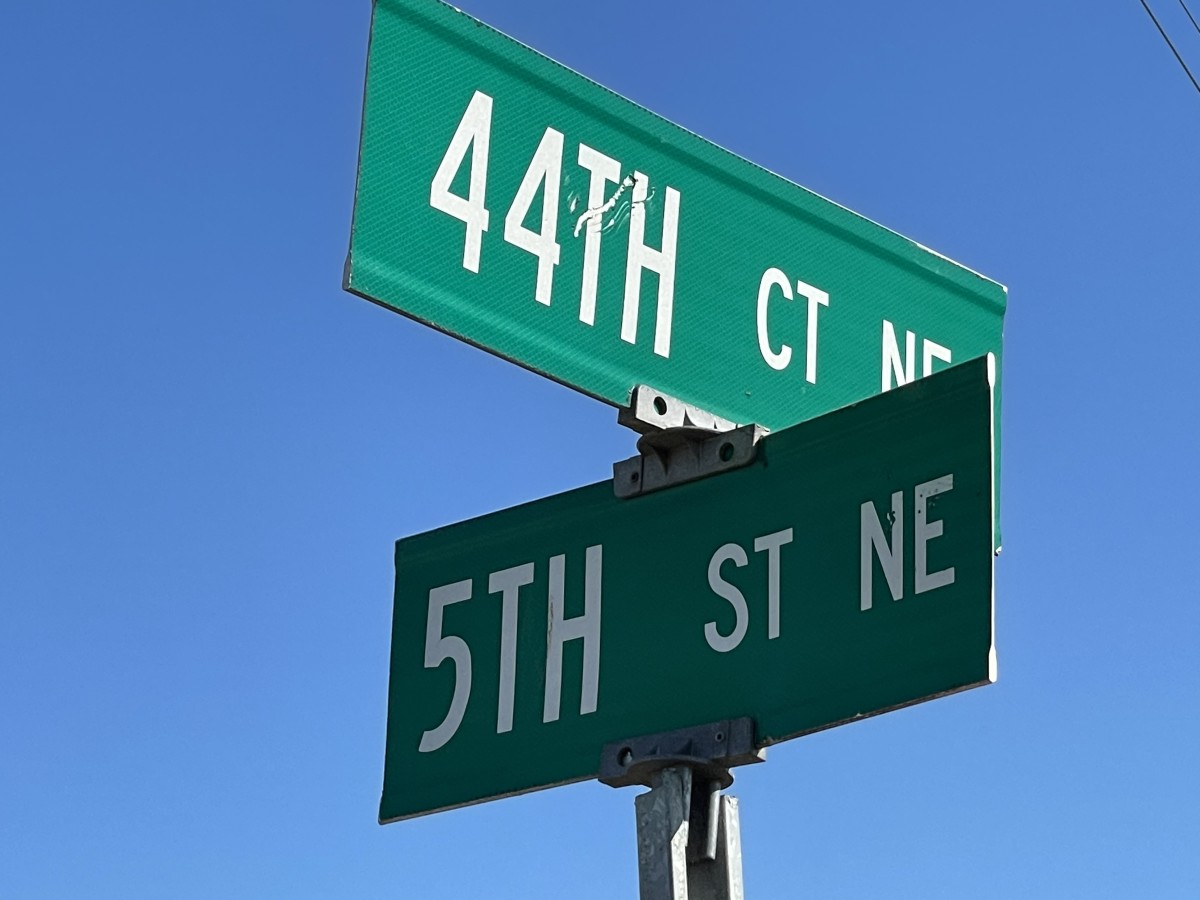10 Years Later, Tuscaloosa's Process of Coping, Recovering from Tornado Continues
TUSCALOOSA, Ala. — Ten years later, she still gets terrified.
That’s the word April Watson uses because there’s just no other way to describe the extreme fear. She doesn’t need to hear a warning or a siren for it to be triggered. Even with the thought of an approaching storm it all comes back.
“It’s something that you never forget, never get over,” Watson said. “Any time a storm happens now, you find yourself kind of like in a corner and don’t want to move.
“I’m terrified of lightning. I’m terrified of any type of storm.”
It can often lead to her being in the back recesses of a closet along with her daughter, trying to help each other yet one more time. Sometimes they can, but not always.
Some scars just don’t go away.
“I can’t believe it’s been 10 years,” said Watson, who every year on April 27 tries to keep busy and not dwell too much on the anniversary. "I just thank God that I was able to live through it and be able to tell someone about it.”
She also continues to play a revealing part in the community's ongoing recovery.
In addition to being a tornado survivor, Watson was among the first people to benefit from the program led by the Nick's Kids Foundation program to build a home for someone in need every time the Crimson Tide football team wins a national championship.
Recently re-dubbed 18 for 18 following the latest title, it developed out of the horrific events that transformed Tuscaloosa forever on April 27, 2011. One of the 360 in the 2011 Super Outbreak, the largest in United States history, an EF-4 tornado went through the heart of Tuscaloosa and decimated Holt, carving out a path width of up to 1.5 miles.
Before it moved on, 53 people were dead, some 1,200 injured, with more than 7,000 homes destroyed.
Watson survived, albeit barely, after her home was completely destroyed. Having taken refuge in the bathroom with her daughter and niece, she was snatched up and pulled away from them. She still doesn’t “remember anything after that.”
Her rescuers found her amongst the rubble in the street. Watson was in and out of consciousness and later told she'd had a seizure en route to the hospital, where a coma was induced.
“My top lip was actually dangling from my face,” Watson said. “I had a stick go through the top of my head through my ear. Something sliced the top part of my foot off … I ended up being on life support.
“Of course I’m here now to tell the story.”
A decade later, it continues for all of Tuscaloosa.
Laying the Foundation …
On May 20, 2011, less than a month after the tornado struck, local media was alerted to a press event being held in the middle of the destruction in Holt. When reporters arrived, they saw numerous properties quickly being cleared and leveled to create a blank slate, save a concrete slab in the middle of the block where the first parts of wood framing were being erected.
It was mostly for show that day, but the symbolism wasn’t lost on anyone.
Looking to the southwest and northeast, nature's gash spanned beyond the horizons. The trees were the giveaway. They stood like wide boundaries, with everything in between a total scene of horror.
The smell was just as bad. Not just a combination of broken wood, wet dust and everything that comes with widespread carnage all rolled into one. The amalgamation included things that had been churned up from underground, fresh-cut grass, gas, and something similar to sulfur.
More than a scent, and not centralized like a stink, it was impossible to ignore or the nausea it often caused. If you tried and imagine what hell smelled like, it’s a good starting point, and something in which everyone in Tuscaloosa at the time will never forget.
This is where the 18 for 18 initiative began, 4238 5th St. NE, the address for Teddy and Rosie Rowe. It would be again.
“I’m speechless,” Rosie Rowe at the time. They were all smiles that day, even while telling how she had turned to her husband and said, “Baby, we’re going to die. I love you,” and how they had to crawl and dig themselves out from under what was was left of their home.
Initially, the endeavor was called “Project Team Up,” spearheaded by a $50,000 donation from the Nick’s Kids Foundation, which was named after Nick Saban’s father and had the primary aim of helping children. This was something he and wife Terry felt they couldn't ignore after it was brought to their attention by Crimson Tide associate athletics director in charge of special projects Thad Turnipseed
The idea was to have different people, businesses and parts of the community work together at all levels and help not just a house, but a neighborhood be completely rebuilt.
The initial target was for about 30 homes in just under a square mile, which had been in the heart of the tornado path. Just under a square mile in size, it was all within eyesight of the lone structure that had escaped undamaged in the area, Soma Body of Christ Church. Organizers had even hoped to build a new ball field for kids.
“This is not just for this community,” Saban said at the dedication as his wife Terry, Tuscaloosa mayor Walt Maddox and others looked on. “This is a concept that we hope gets adopted by many, many people.
“I hope this is an example of what can be done state-wide, and in other places.”

After the press event concluded, Saban had to speak up over some nearby construction equipment to tell the Rowes that the aid was “heartfelt.”
However, after four houses were built in the Holt neighborhood, the project branched out and grew in different directions. With the Alabama football program winning the national championship at the end of the 2011 season, and again in 2012, and Habitat for Humanity of Tuscaloosa becoming more of a direct partner, the idea morphed into building a new home for every title.
Terry Saban started calling it her favorite part of winning a national championship.
One of the areas that became part of the tradition was Juanita Drive in Alberta City, which was also obliterated by the tornado. Habitat for Humanity has had a strong presence there behind where the elementary school stood, building 33 houses including national championship house No. 17 three years ago.
This specific build was different because it was catered to fit the special needs of Donna Smith and her son Andrew, who was born with spina bifida. When more than 30 football players and Saban showed up one day to help make it fully handicap accessible (with Jalen Hurts helping guide one crew and Tua Tagovailoa the other), some of the linemen only had to reach up to work on the eaves along the front.

In the back, numerous players were surprised Saban knew how to set the deck footings in concrete, and was handy with a drill (while wearing loafers).
“We’re doing great,” Smith said. “It’s wonderful. Every day it’s never far from my mind how many people had a hand in what happened, how we got the house, everyone working together and such a community effort.
“And of course the Sabans, having such a huge part in that. To me it’s almost still surreal.”
But not everyone has had a happy ending, and just because one survived a tragedy doesn’t make him or her immune to another.

Holt Looks Very Different
Watson’s house, which was across from where the Rowes lived, was originally yellow. It was initially built for someone else, but when the necessary details couldn’t be worked out regarding ownership, it thankfully ended up with her.
The color was the only thing she changed. It’s now more of teal, and stands out even more on 5th St.
As hoped, there’s a neighborhood there again, but not as initially envisioned. Many of the cleared lots now sport trailer homes, and right around the corner is where the new Holt High School was built. Except for the ongoing lack of big trees, one would probably never guess it had been the site of a natural disaster.
She still lives there, with her daughter, and the home has aged like most do over a decade, although with an unwelcome element. A leaky pipe under the house led to flooding and water damage to the floors and cabinets. A damaged window also needs to be repaired for what she still calls her son’s room.
Caleb Watson, who had also survived the tornado after getting thrown about, shockingly died in 2018. A student at Stillman College, he collapsed while playing basketball, his death attributed to an unknown heart issue. He was 21.
“He would have graduated this May,” she said. “It’s hard.”
As for the Rowes, Rosie died in 2014 from cancer. She was 57.
Teddy no longer lives in the house.
Meanwhile, the work and the rebuilding goes on.

On Tuesday, the April 27 anniversary, Habitat for Humanity of Tuscaloosa will dedicate the final house on Juanita Drive. Per executive director Ellen Potts, it'll be the 87th house it helped build since the tornado, along with another 250 or so repair jobs.
A couple of weeks from now, it'll start work on the 18 for 18 house in yet another part of Tuscaloosa, West End, where 40 lots have been secured.
Normally the work on house No. 18 would have begun months ago, but coronavirus restrictions have delayed construction and the use of volunteers. As those limitations are slowly being lifted, Smith is among those who wants to contribute.
She knows how important it can be in someone's life, along with a little hope.
“The words that I used back then was ‘I was so overwhelmed, but in the best way possible,’" Smith said. "I still feel that way at times. I go back to that moment that the Sabans are there and it’s the dedication …
“It’s still overwhelming. It’s that same feeling. I have such gratitude.”

















This is the first story in a weeklong series about the 10-year anniversary of the Tuscaloosa tornado.
